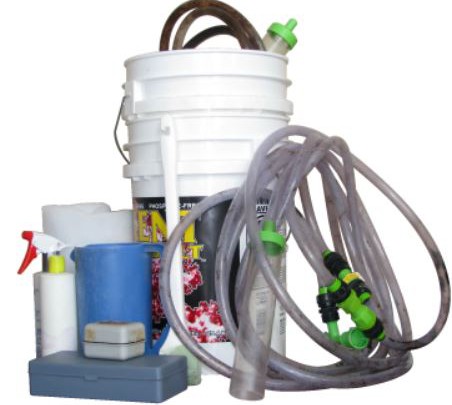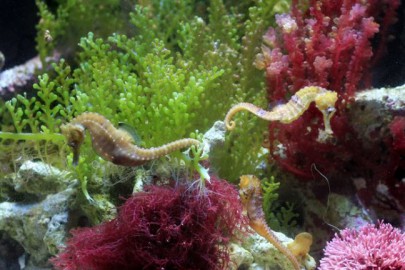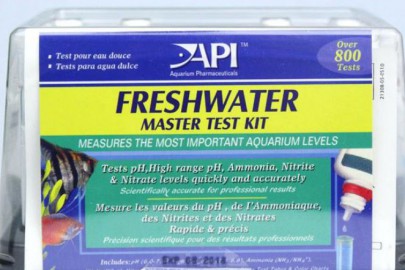Aquarium Maintenance – The Basics
Good aquarium maintenance practices will lead to a healthy aquatic environment and thriving fish. Expensive and time-consuming problems can be prevented by spending thirty minutes on maintenance every other week. The biggest factor for maintenance is tank stability. As long as everything is running properly and your fish are healthy, there is no need for any major change, even if the pH or hardness seems to be slightly out of range; only increases or decreases of the major aquarium water parameters will need your careful but immediate attention.
Water Changes
A key part of aquarium maintenance is the water change, which should be performed about every two weeks. In most cases, 10-15% of the tank volume is sufficient. A good method is to replace the water extracted while vacuuming the gravel, which will eliminate uneaten foods and other residues that settle on the substrate. It is highly recommended to check the water parameters of both the tank and replacement water. Most tap water (city water) contains either chlorine or chloramine. Chlorine will air out rather quickly (kept in an aerated bucked for twenty-four hours); chloramine (chloramine = chlorine + ammonia) will not. Using a water conditioner will neutralize the chlorine in both cases, but ammonia will still be present in the latter. It has to be broken down by the nitrifying bacteria present in the aquarium. This may take longer than your fish can tolerate.
Other elements of municipal water may be phosphates, iron, and other heavy metals. To find out about your tap water chemistry, call your local water company.
Filtered water should also be checked on a regular basis and should be considered part of your aquarium maintenance routine. The filter membranes could be damaged or may require replacement prior to the expiration date.
Testing the Aquarium Water
Water chemistry is not visible; therefore, it is vital to check it on a regular basis. The best way to make this a routine is to check on the tank chemistry while changing the water. The vital parameters are pH, nitrates, nitrites, and carbonate hardness (salinity for marine tanks).
Stability is the main factor with pH. pH in the range of 6.5 – 7.5 is suitable for most species, but they can adjust if slightly out of range.
KH (carbonate hardness) is the indicator of pH stability. It should be kept under close observation if it comes close to 4.5 dH (degree hardness) or 80 ppm.
Nitrites should be undetectable at all times (except during cycling). If you detect nitrites make sure you check on ammonia as well.
Nitrates should be kept below 10 ppm in freshwater and 5 ppm in marine and reef (preferably 0 ppm).
Filtration of the Aquarium
The proper function of the filter is essential. Filter inserts should be changed at least every four weeks. A high fish load may require shorter periods. Trapped particles will decompose in the filter as they would in the tank. The filter should also be cleaned once a month (do not touch the bio-wheels, if present) by using the water extracted from the tank during the water change.
Recommended Aquarium Maintenance Routine
Daily
• Make sure the equipment is running properly.
• Watch your fish during feeding. Behavioral changes are a good indicator of a potential problem.
Weekly
• Count your fish. In case of fish death, smaller species can decompose quickly, resulting in ammonia and nitrite spikes, and eventually high nitrate levels.
Every Other Week
• Test your water for the vital parameters: pH, carbonate hardness, nitrite and nitrate.
• Change 10-15% of the water.
• Vacuum the gravel.
• Clean the aquarium walls. Filter floss is fairly cheap and very efficient. Start from the bottom upward and rinse out often.
• Rinse filter inserts (cartridges) with the extracted water.
Monthly
• Replace filter inserts.
• Inspect tubing, connections, airstones, skimmers and other parts for proper operation.
• Clean aquarium top to assure your lighting is not affected.
• Check the expiration dates printed on the boxes and bottles of the aquarium supplies you use. Do not use after the imprinted date.







3 Comments
Lillian
Wanting to start a Discus tank, what size tank do you recommend for 8-10 Discus?
discusguy
Hi,
I recommend 7 gallons for every 1 discus fish. So for 8 discus at least 56 gallon tank. 10 discus at least 70 gallons. This will give them plenty of space to grow.
Thanks
rob
Lillian
What size aquarium do you recommend for 8-10 Discus?